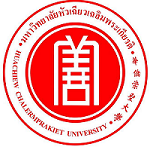Please use this identifier to cite or link to this item:
https://has.hcu.ac.th/jspui/handle/123456789/3511Full metadata record
| DC Field | Value | Language |
|---|---|---|
| dc.contributor.author | Sila Temsiririrkkul | - |
| dc.contributor.author | Prarinya Siritanawan | - |
| dc.contributor.author | Rungravi Temsiririrkkul | - |
| dc.contributor.author | ศิลา เต็มศิริฤกษ์กุล | - |
| dc.contributor.author | รุ่งระวี เต็มศิริฤกษ์กุล | - |
| dc.contributor.other | Huachiew Chalermprakiet University. Faculty of Science and Technology | en |
| dc.contributor.other | Japan Advanced Institute of Science and Technology. School of Information Science | en |
| dc.contributor.other | Thammasat University. Faculty of Pharmacy | en |
| dc.date.accessioned | 2025-01-12T06:29:38Z | - |
| dc.date.available | 2025-01-12T06:29:38Z | - |
| dc.date.issued | 2021 | - |
| dc.identifier.uri | https://has.hcu.ac.th/jspui/handle/123456789/3511 | - |
| dc.description | TENCON 2021 - 2021 IEEE Region 10 Conference (TENCON), Auckland, New Zealand, 2021, pp. 738-743, doi: 10.1109/TENCON54134.2021.9707324 | en |
| dc.description | สามารถเข้าถึงบทความฉบับเต็ม (Full Text) ได้ที่ : https://ieeexplore.ieee.org/document/9707324 | en |
| dc.description.abstract | The recent Deep Learning algorithms have demonstrated incredible performance in many fields of research, especially an object detection task where algorithm advances are at a level that can be applied to real-world problems. Classification of plants by leaf image is one of the problems that has been of interest among computer vision researchers for a long time because of its challenges due to a large number of species and their complex features. There are many approaches presented and show promising performance for the task. However, in the tropical area where the diversity of plants is rich, examples of the physical similarity of the leaves in different species can be found easily. Moreover, it is reported that many accidents of misidentifying plants and their usages can be life-threatening. Thus, specimens of plants with similar leaf structures are interested in this research. We present a method to identify plants that are similar in morphological characters of leaf. Using image processing and deep learning techniques and transfer learning of several deep convolutional neural network architectures: VGG-16, ResNet-50, and InceptionV3, the proposed method can identify seven Lamiaceae plants yielded high accuracy prediction of 98.71%, 91.32%, and 98.17%, respectively. | en |
| dc.language.iso | en_US | en |
| dc.rights | IEEE | en |
| dc.subject | Deep learning (Machine learning) | en |
| dc.subject | การเรียนรู้เชิงลึก (การเรียนรู้ของเครื่อง) | en |
| dc.subject | Image processing | en |
| dc.subject | การประมวลผลภาพ | en |
| dc.subject | Plants – Classification | en |
| dc.subject | พืช – การจำแนก | en |
| dc.subject | Herbs – Thailand | en |
| dc.subject | สมุนไพร – ไทย | en |
| dc.subject | Convolutional Neural Network | en |
| dc.subject | โครงข่ายประสาทเทียมแบบสังวัตนาการ | en |
| dc.subject | Neural networks (Computer science) | en |
| dc.subject | นิวรัลเน็ตเวิร์ค (วิทยาการคอมพิวเตอร์) | en |
| dc.subject | Convolutions (Mathematics) | en |
| dc.subject | คอนโวลูชัน (คณิตศาสตร์) | en |
| dc.subject | Image analysis | en |
| dc.subject | การวิเคราะห์ข้อมูลภาพ | en |
| dc.title | Which one is Kaphrao? Identify Thai Herbs with Similar Leaf Structure using Transfer Learning of Deep Convolutional Neural Networks | en |
| dc.type | Proceeding Document | en |
| Appears in Collections: | Science and Technology - Proceeding Document | |
Files in This Item:
| File | Description | Size | Format | |
|---|---|---|---|---|
| Which-one-is-Kaphrao-Identify-Thai-Herbs-using-Transfer-Learning-of-Deep-Convolutional-Neural-Networks.pdf | 64.85 kB | Adobe PDF | View/Open |
Items in DSpace are protected by copyright, with all rights reserved, unless otherwise indicated.
